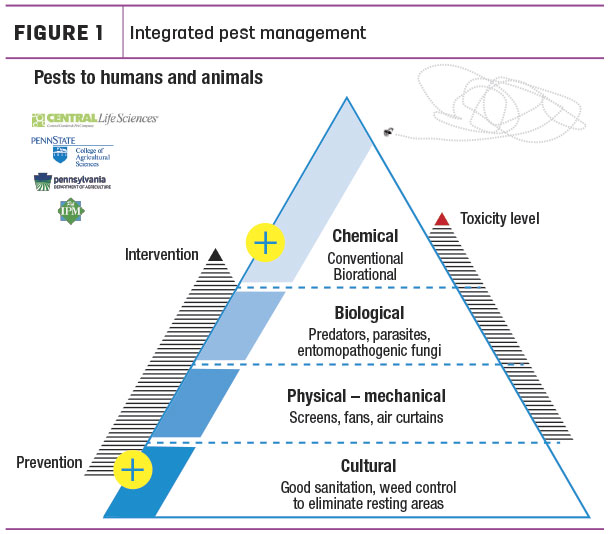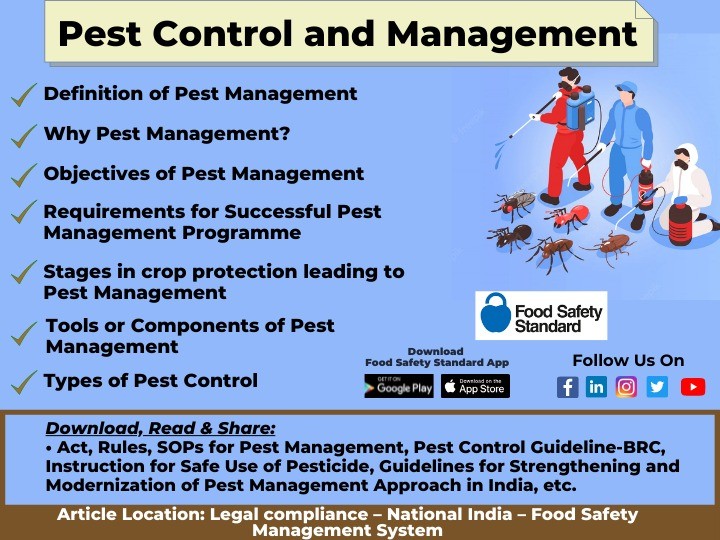7 Simple Techniques For Pestwise
The Main Principles Of Pestwise
Table of ContentsSome Known Incorrect Statements About Pestwise All About PestwiseSome Known Factual Statements About Pestwise Pestwise Fundamentals ExplainedThe Best Strategy To Use For PestwiseAn Unbiased View of PestwiseFascination About Pestwise

Q. Specify "integrated pest monitoring" (IPM) and listing several feasible control tactics that might be used in an IPM approach. A. Integrated insect management is the incorporating of suitable parasite control techniques into a single strategy to decrease parasites and their damage to an acceptable level. Parasite control tactics may consist of: host resistance, biological control, social control, mechanical control, sanitation, and chemical (chemical) control.
Some Known Factual Statements About Pestwise
What can you do to keep the bugs you are attempting to control from ending up being immune to the chemicals you make use of? A. Bug resistance can be lowered by using integrated bug monitoring and revolving the kinds of pesticides used.
Insects are an essential threat to the farming company, and integrated insect administration assists cultivators address and minimize these threats. Integrated parasite management utilizes several methods in complex, thus being a more effective service to the issue. Exterminator. Particularly, getting rid of aggressive chemical methods enables minimizing damage to people and the environment by utilizing natural and more secure alternatives rather
The Main Principles Of Pestwise
The objective of integrated pest monitoring is to lessen this harm and control appropriate invasion levels instead of eliminate all undesired populaces. This is why it is essential to recognize what procedures are warranted in each situation and use hostile ones only when various other integrated administration techniques do not work. Integrated monitoring reduces the adverse repercussions of a non-IPM approach, and the major benefits of IPM Perks of IPM.
A correct understanding of the problem scope determines if the issue should be attended to. are the next parts of an IPM program since it is essential to understand if the organisms make prospective risks and choose the incorporated monitoring options or the specific pesticide usage. plan to decrease problems by applying different agronomic methods.
Pestwise Things To Know Before You Get This
if prevention was ineffective. Integrated administration choices in an IPM program begin with much safer to a lot more hostile ones. For instance, target or program chemical splashing might adhere to hand-operated elimination or capturing that hasn't assisted. Those click here for more info integrated management facets aid recognize just how to intend and apply an IPM program action by action: Display your plants routinely.

To name a few, IPM cultural methods include the complying with area monitoring techniques: dirt treatment; selection of suitable plants; crop rotation; interplanting or strip cropping; choice of planting dates; weed control; usage of catch plants. Beneficial dirt problems speed up plant growth, and vigorous plants are extra immune to infestations. Wasp Nest Removal. In incorporated bug monitoring, soil testing aids recognize if the area appropriates for the manufacturing of this or that plant, and afterwards apply the lacking nutrients to make certain plant healthy and balanced development
Things about Pestwise
No-till practices aid avoid dirt disintegration, adding to sustainable farming. However, when tilling is essential, it is suggested to perform it in the be up to expose them to all-natural enemies and extreme weather condition. Healthy and balanced seedlings and seeds determine successful plant advancement, so it is essential to pick pest-free planting product with strong roots.
, which is also used in the integrated bug monitoring system. On the other hand, problems enhance when plants of the same plant kind or family expand together.
In a similar way, potato beetles can harm growing potatoes, along with tomatoes. Growing catch plants in spots is one more choice for IPM intercropping. This incorporated bug monitoring approach recommends bring in parasites to specific plants and afterwards managing them with chemical or mechanical methods. Particularly, you can grow soybeans as trap crops for Japanese beetles.
Pestwise for Beginners
Barriers are typical examples of physical IPM approaches. Let's take a closer look at them. Getting rid of or choosing parasites out manually is a time and labor-consuming option that is commonly applied in incorporated management and natural farming. Mature pests or their eggs and larvae are gathered by hand and destroyed.

Division of Plant Sciences. College of Missouri. Dirt solarization is an efficient incorporated administration method to sanitize the area by heating it in a natural way. This integrated administration approach implies a common method of damaging insects by killers, parasitoids, microorganisms, and various other organic control agents (aka hostile microorganisms). The duty of organic control in IPM is to.
The Greatest Guide To Pestwise
With time, their populace became a genuine annoyance to farmers together with native kangaroos or dingoes. The walking stick toad is another case illustrating integrated organic control failing in this respect when it declined to hunt the target species and became a parasite itself. Parasitoids create on or within their hosts to ultimately kill them after growing.